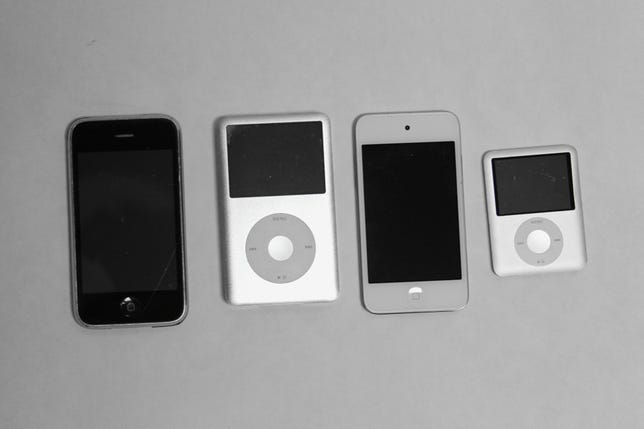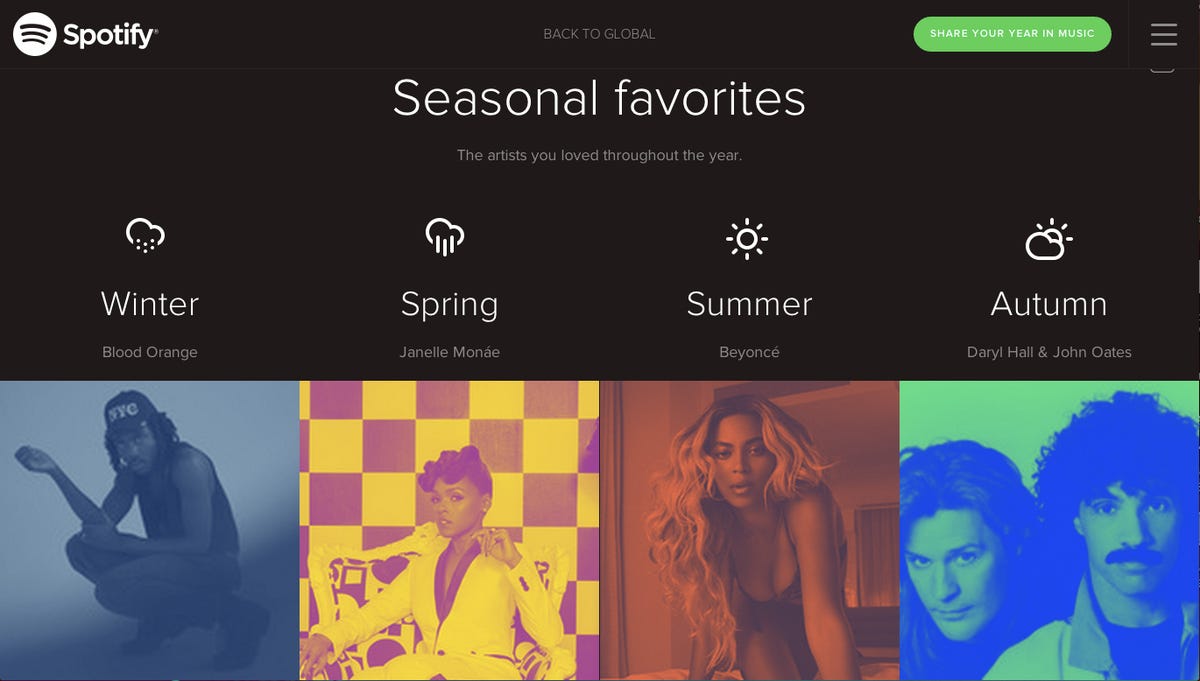For music lovers like me, streaming services are a dream come true. And although there seems to be a new competitor popping up every few month, Spotify is my current tool of choice for pumping the nonstop tunes that I crave.
It’s easy to take the Internet’s streaming music for granted, but for me, who used to seek out works of credited writers and performers printed in small type on cassette liner notes as a way to find new music, the technology of distributing soul-sustaining songs has always been the ultimate barrier or opportunity.
The technology of finding and sharing music hasn’t just evolved from one form (cassettes for me) to another (CDs and MP3s). It’s exploded and expanded into a limitless world of virtual exploration and discovery.
That’s the beauty of streaming music, the get-it-anywhere, take-it-anywhere method for hearing almost any musical style you want, on the spot. My Spotify subscription is a ticket to a sonic buffet that offers easy access to more music than Dong Ngo can fit on all of the CNET Lab’s hard drives combined. It also helps me continue a personal, lifelong passion of exploring new music by providing the tools that I, and others like me, need to stay happy. See, I don’t just love music. I need it.
Here’s why Spotify is so important to me, and how the technology of Internet streaming makes such a difference in my day-to-day life.
Musical excavator
I grew up sheltered in a religious Christian household where the only acceptable music was humdrum hymns, and everything else was considered “worldly” and “of the devil”. Unfortunately for my loving, conservative parents, I’m a born music excavator with something of a stubborn streak.
Even as a 5-year-old, I stayed up past my parents’ bedtime and used the family’s toylike pink and green boombox to scour the radio waves for whatever caught my ear. Old school R&B and soul music like The Supremes and Otis Redding sang me to sleep.


Click here for more stories in CNET’s Most Exciting Tech series.
I started falling in love with music during those late nights as a defiant child. My rebellion wasn’t so much about feeling like a badass, or pulling one over on my parents; I just really liked “secular” music. Initially, I simply loved that sounds could be beautiful. I connected on an auditory, visceral level, but paying attention to the lyrics made me realize that this so-called “devil music” wasn’t that at all; it was about love, loss and life.
Music is an expansive and metamorphic art form that’s as universal as it is personal. I love that it can move you to smile, cry, dance or think. I vividly remember listening to “Have You Seen Her” by The Chi-Lites and being genuinely concerned for all parties involved. I speculated about this unknown woman’s whereabouts and if she knew there was an amazing song written about her. Music helps me empathize, understand and enjoy the world around me, even if it’s just during those few moments before bed.
While the radio waves were my first introduction to songs I heard on the fly, technology that let you hear specific albums and songs when I wanted to hear them opened up whole new worlds in my burgeoning understanding of society.
A journey in musical technology
The family’s first portable music player, a Walkman, belonged to my mother, who used it to play religious cassette tapes. I commandeered it, playing and replaying the only tape I had, an old New Kids on the Block album that my cousin abandoned at our house years before. It wasn’t long before I learned how to make mix tapes by recording songs off the radio using a kiddie-size karaoke machine.
Years later came the personal CD player. I carried it with me everywhere, in a denim-clad FUBU purse made especially for portable CD players; I loved its separate compartment for storing up to 10 discs. Once I started burning CDs through Napster, Kazaa and Shazaam, I often crammed up to 20 discs at a time inside that bag, trying not to scratch them.


Xiomara Blanco/CNET
In my freshman year of high school (and later than all my friends), I finally got my first MP3 player. It was a hand-me-down Apple iPod from a family friend, the awkward-looking third-generation model with the unbecoming buttons placed above the scroll wheel. It eventually broke and my mom graciously bought me another iPod, one with video. But it was another Apple gadget that would turn my world upside down: the iPhone.
No longer did I have to carry around my phone and a separate MP3 player. Now I could text my best friend funny quips and listen to all those Death Cab For Cutie albums I downloaded from iTunes, all on the same device. The iPhone probably singlehandedly cured whatever faux emo phase I was going through at the time — with all this great access to music, who had time to be fashionably grumpy?
Several Justin Timberlake albums and a happy transition to Android later, my MP3 collection now sits on a hard drive in my bedroom, collecting dust. Sometime between my first iPhone and now, I started investing in a blossoming vinyl collection. My limited funds as a college student hindered me from also purchasing the albums in a digital format, so when Spotify hit the US, the switch to streaming music made sense.
A means to a musical end
Today, I seamlessly stream whatever the heck my heart and ears desire from my phone or laptop, thanks to my Spotify subscription. As part of the package, I also get to check out new music in its entirety without having to download any files. My days of daringly taking a chance on an unknown record just because the album art looked cool, spending all of my birthday money on CDs, or worse, feeling like a guilt-ridden, nefarious music pirate, are all far behind me.
Just like a hopeful contestant on a dating show, I’ve given a fair chance to most of the competition out there. I’m too picky and controlling about what I’m listening to for radio services such as Pandora and Rdio, and I’ve tried other on-demand streaming services like Apple Music, Rhapsody, Google Play Music and Tidal. Using these, I encountered issues ranging from a lackluster music catalog to pitiful mobile app performance, and none lived up to the standard set by Spotify.
Like every music listening method before it, Spotify isn’t without its faults. Performance issues happen more than I’d like, and the desktop app almost rivals iTunes in the category of “software with the most frequent and seemingly indiscernible updates”. It’s still better than using up all of my phone’s internal storage on Janet Jackson’s discography, and the opportunity to listen to almost anything I want, at any given moment, heavily outweighs the cons.


Screenshot/Xiomara Blanco
As I look forward, I expect streaming music to stick around for awhile, but improvements are necessary. I hope (like Neil Young) that high-quality streaming becomes the norm and that artists start to get properly compensated for their work — my biggest dilemma about using Spotify and its ilk. Short-changing artists is biting the hand that feeds because, without them, these services wouldn’t even exist.
Tidal, a rival, Jay Z-backed streaming service, attempts to address these issues and, as a consumer who grapples with balancing personal convenience and financial obligation to the artist, I was initially excited to give the service a try. I wound up crawling back to Spotify a month later due to consistent performance problems. I don’t have solutions for the complex issue of streaming royalties, but a quality service with a healthy compromise of affordability for the consumer and financial viability for musicians shouldn’t appear utopian; a midpoint must occur.
Maybe Spotify should reconsider its “music should be free” ethos. I know I did. From my early years of recording Bad Boy Records-centric mixtapes off the radio, to regularly binging every Spike Jonze music video on YouTube, I admit, I’ve been complicit in consuming music for free. Up until my first job as a teen, I didn’t have the means to pay for music, but now, as an adult with more disposable income, I can and I do.
A new addition to the streaming scene is YouTube Music. As soon as I heard the app was available, I downloaded it with the fervor of a kid unwrapping an Xbox on Christmas. It’s not that I’m eager to replace Spotify, I just know the streaming music model can be improved — and I’m all about exploring new options. The music-dedicated YouTube app offers a similar ad-free subscription for the same cost as Spotify. I’m in the process of giving it the college try, and so far I enjoying how easy it is to discover music from similar artists or genres that I’ve previously listened to on YouTube. Unfortunately, I really don’t like that I can’t customize my own playlist. I haven’t used it enough to give much of an opinion on how well it works, but time will tell if it’ll eventually dethrone Spotify as my number one.
For now, though, Spotify remains king. I can’t buy happiness, but I can afford a $10-per-month subscription for a music service that, with a few simple swipes and taps, allows me to go from listening to Odd Future to Fugazi — and that freedom, for right now, is close enough for me.
Editors’ note: This post was originally published on August 9, 2015, and has been updated.




